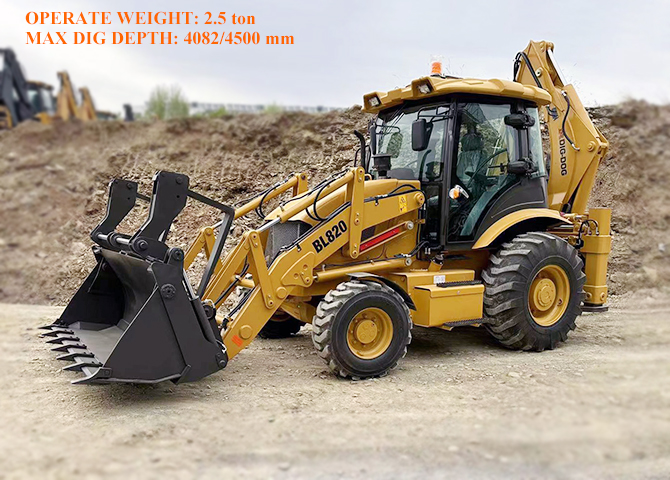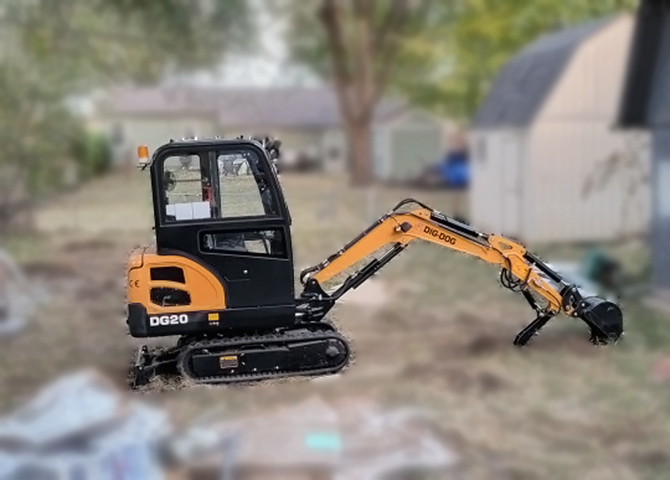A mini excavator is a tracked or wheeled vehicle with a slew of uses in construction. It can weigh up to 20,000 pounds, which is the cutoff point for a machine that you can consider compact. Some definitions have a cutoff point for mini excavators at 10,000 lbs, though.

Mini excavators are popular machines because of their versatility, with many uses for different construction jobs. However, not every mini excavator is suitable for every job. You can buy machines of different sizes and weights according to the tasks you need to complete. Find out below about some examples of when using a mini excavator is a good idea for site work.
It’s important to understand the differences between compact and standard excavation machines. Mini excavators offer some benefits compared to regular excavators that make them better suited to certain jobs. Standard excavators are also useful machines in their right. You need to make your choice depending on the job at hand.
Mini excavators are lighter and smaller, meaning they offer reduced track marks and top ground damage. The compact nature of mini excavators compared to larger machines makes them much easier to work with on crowded sites. A standard excavator’s large size can cause problems in a parking lot, for example. A mini excavator can get around a parking lot easily. Another benefit of the smaller size of compact machines is that you can easily transport them between sites. You can load your excavator on the back of a utility truck or trailer for quick transfer between sites. Always make sure the trailer can support your excavator’s weight first.
You can expect a mini excavator to have a longer life than a larger one simply because the work it does is less intense. Mini excavators have typical bucket sizes of between 12 and 24 inches. You can also add some attachments to mini excavators, improving their versatility.
The following are some of the main parts on mini excavators.
One of the major draws of mini excavators is that you can use them for a slew of different tasks. The sheer number of possible attachments and the light frame are what make the mini excavator such a versatile machine. The following examples showcase some construction jobs that are ideal for using a mini excavator.
For basic sewer line repair jobs, a mini excavator often makes for a better option than a full-size machine, such as a trencher. The reason you can opt for a mini excavator for sewer repairs is that mini excavators do the same job at a lower price than the larger machines. The only thing you need to assess is the required digging depth for the sewer line to make sure it’s within reach of a mini excavator. Once you gauge that you can use a mini excavator, it doesn’t make sense not to choose this tool for the job.
Many Americans enjoy having a pool or large hot tub installed outside their homes. You can see just how popular pools are from the fact that there are 10.4 million residential swimming pools in the United States. Since many state laws make homeowners get special building permits for pools, they often look to contractors to do the job. The compact nature of mini excavators makes them perfect for navigating a backyard that might not fit a larger digger.
City workers often need to clear roads covered with snow during the colder months of the year. Mini excavators can clear snow effortlessly using a special blade attachment. The compact size and low weight help these machines to get around snow-covered roads quicker. The result of using mini excavators to plow snow is clearer, safer roads.
Many site jobs call for the demolition of small structures such as sheds. A good way to effortlessly destroy any small structure is to use a mini excavator. Such machines are fit for this purpose because they can get around small areas efficiently and fit into tight spaces such as gates. Without a mini excavator, you may need to demolish structures with hand-powered tools, which takes a lot more time.
Sometimes you need to dig holes in awkward areas of sites you might work on. Construction teams often resort to using slow methods for excavation in these areas, including old-fashioned shoveling or hand-powered tools. A mini excavator’s ability to move into difficult areas of sites makes it the ideal machine for digging holes in, particularly tough-to-reach spots. Using a mini excavator on smaller sites to dig holes can speed up projects, freeing up time to finish other important tasks.
Mini excavators make many construction tasks safer and more efficient. Their small size allows for quick movement into awkward areas that can speed up many jobs, including:
It is important to follow the steps such as those below in order to operate excavators correctly.
You reduce the chance of an accident when you or any workers using a mini excavator take the time to become familiar with each new machine. Mini excavators are powerful tools that deserve respect.
The ideal testing location is a large, open area with a level surface. Go through all the controls and get a feel for the machine. Get used to the rotating cabin, which enables you to see how the controls respond to your inputs easily. Make sure you gauge how the boom responds to the controls. Mini excavators are quite stable, but a level surface helps reduce the risk of overturning the machine for inexperienced users.
Whether you work as a contractor or construction manager, you should always consider buying a mini excavator for jobs or sites that might need them.

The great thing about mini excavators is that they are ideal for selecting on a per-project basis. Consider buying a mini excavator from DIG-DOG. You can choose from a range of the latest compact excavators in some different weights for the best price.
 How To Choose The Right Compact Wheel Loader
How To Choose The Right Compact Wheel Loader
 How Much Does a Forklift Weigh?
How Much Does a Forklift Weigh?
 How Much Does a Backhoe Weigh
How Much Does a Backhoe Weigh
 How Much Does a Mini Excavator Weigh
How Much Does a Mini Excavator Weigh